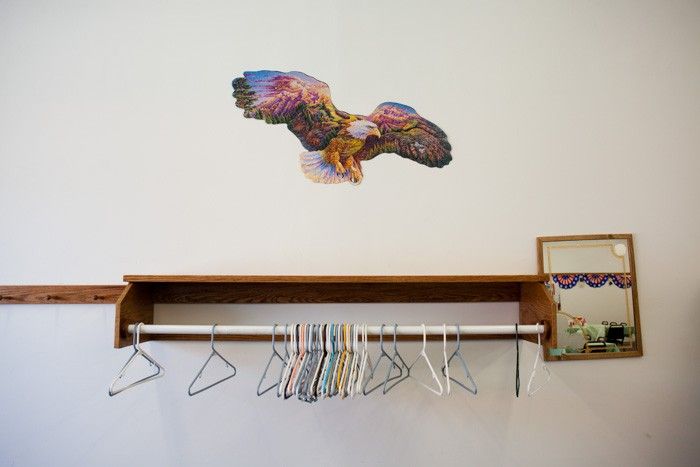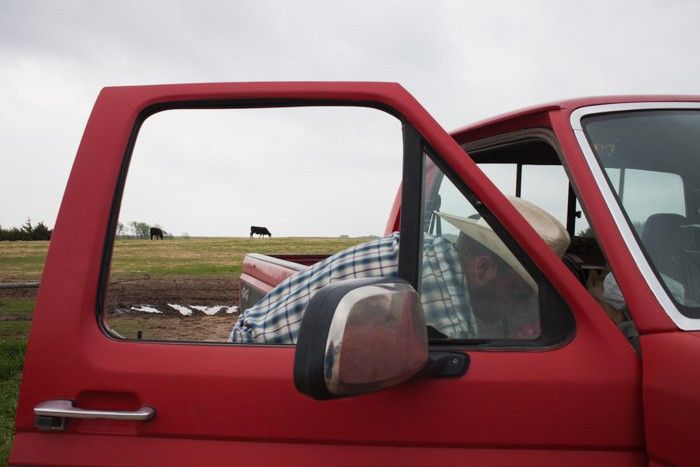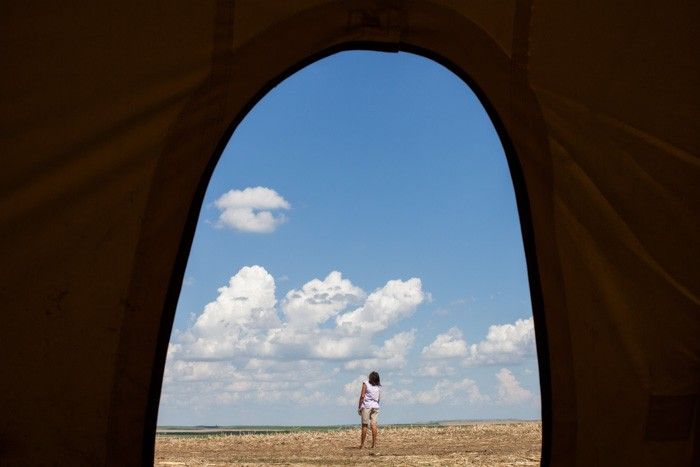blog
Interview with photographer Kate Schneider

Senior Centre. Atkinson, Nebraska
F-Stop Magazine: How did you first become involved in photography and what led to you working in this medium as an artist?
Kate Schneider: I’ve used photography since I was sixteen. I am in my mid-30s now. I quickly fell in love with the medium – it was fast, easy (even in the film days), and it provided a nice barrier where I could hide behind my shyness. Also, I’ve always loved politically driven work based in realism. Photography was the perfect medium to investigate the world around me, and to make sense of what confused me. Ironically, what I am working now and what I was interested in at that time are strongly related – I use photography as a tool to comment on the human condition, and our relationship to the natural world.
F-Stop: The current issue of F-Stop Magazine includes images from your project “We, the Heartland,” can you tell us about this project? How did this project come about?
KS: We, the Heartland is about the cultural landscape along the proposed Keystone XL pipeline route in Nebraska and South Dakota, and the protest movement against the proposed pipeline. I became interested in this topic in 2012 when my father and I went on a trip through the American plains states. During our trip I met countless self-professed Republican farmers and ranchers who were staunchly against the proposed project. I also became fascinated with the landscape of the prairies.
I went back to Nebraska a year later with the intent of photographing the landscape along the proposed route, and to show the viewer what could happen to the land if the pipeline is approved. I also wanted to show how the protest movement counters our idea of what an environmentalists is. The people fighting the KXL in Nebraska and South Dakota are not granola-eating college-age environmentalists, but the grandmas, ranchers, Lakota native, and other people who are directly affected by the proposed pipeline.

Kilmurry Ranch. Holt County, Nebraska
F-Stop: Can you discuss your process for making these images or your creative process more generally? What were you looking to capture?
KS: As a documentary photographer, my process is dependent on the project participants and my relationship with them. In this instance, the landowners thought I was a spy for the pipeline company, TransCanada, and were not willing to let me onto their land. Eventually, the landowners began to trust me, but this only happened through luck and by helping out on several of the ranches in the area. Once the landowners could see that my intentions were honest, I was then able to make photographs in the region. Really, this work would not exist if it was not for the participants – the people involved in the project were willing to let me photograph on their lands and helped me to meet other people who are affected by the proposed pipeline.

Leota Watches a Kite. Ideal, South Dakota
F-Stop: What do you hope people see or feel or perhaps learn when they look at your photographs?
KS:I want the viewers to get a sense of the prairies and what is at stake in the fight against the KXL. Most people have not been to the Sandhills of Nebraska or the Rosebud Sioux (Lakota) reservation in South Dakota, but both places are part of a rich mythology of westward expansion and cowboy culture that is constantly recycled in the media. I want this project to be read within this mythology and to counter the mythology. I also want the viewer to see the complex voices of the white and indigenous peoples fighting against the proposed pipeline
F-Stop: Do you have a favorite image in this series? If so, which one and why is it the image that speaks to you most?
KS:This is a hard question to answer. There are the images that I love because of my memories of that day, there are the photos that I love because of how well the image speaks to the story, and then there are the photos that I am still amazed how everything seamlessly came together without any orchestration on my end.

Bonny Kilmurry. Holt County, Nebraska
F-Stop: Are you working on any other projects currently?
KS:I have a few ideas that I am starting to work on, but it’s far too early to discuss the work. I’m now just wondering if what I have is a “thing,” as my friends and I like to say. Going from concept to thing-ness is challenging and can take awhile. You might have a thing or you just might have a pile of dung. Right now it could go either way!

Beck Farm. Holt County, Nebraska
F-Stop: What photographers or other artists inspire you?
KS: There are many artists that inspire me, and the works of these artists are focused on the human condition in the North American context. I just picked up a copy of Paul Graham’s Does Yellow Run Forever. That book is an excellent example on how to tell a complex story in a simple way.
For more of Kate Schneider’s work: kateschneider.net
Events by Location
Post Categories
Tags
- Abstract
- Alternative process
- Architecture
- Artist Talk
- artistic residency
- Biennial
- Black and White
- Book Fair
- Car culture
- Charity
- Childhood
- Children
- Cities
- Collaboration
- Community
- Cyanotype
- Documentary
- Environment
- Event
- Exhibition
- Faith
- Family
- Fashion
- Festival
- Film Review
- Food
- Friendship
- FStop20th
- Gender
- Gun Culture
- Habitat
- Hom
- home
- journal
- Landscapes
- Lecture
- Love
- Masculinity
- Mental Health
- Migration
- Museums
- Music
- Nature
- Night
- nuclear
- p
- photographic residency
- Photomontage
- Plants
- Podcast
- Portraits
- Prairies
- Religion
- River
- Still Life
- Street Photography
- Tourism
- UFO
- Water
- Zine

Leave a Reply